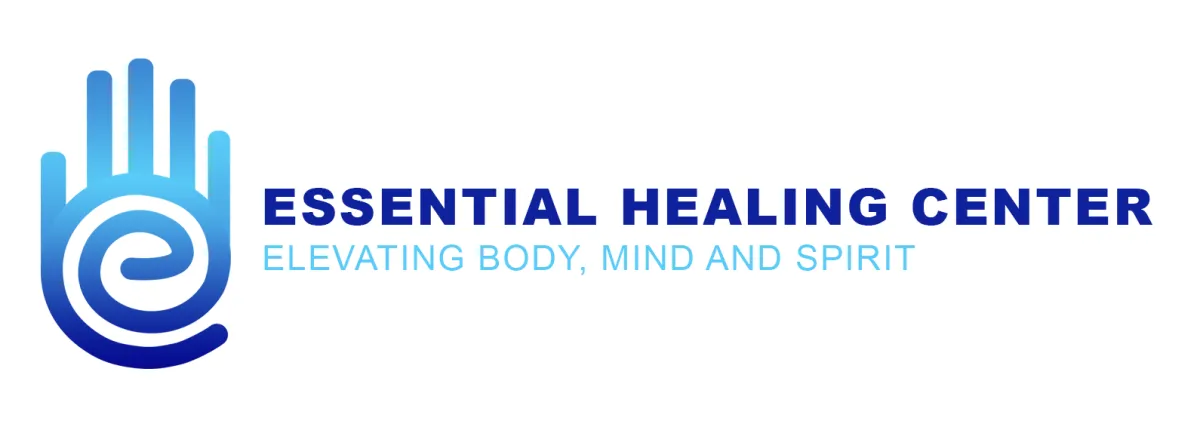FREQUENTLY ASKED
QUESTIONS (FAQs)
Answers to Your Frequently Asked Questions
FREQUENTLY ASKED QUESTIONS (FAQs)
Answers to Your Frequently Asked Questions
FREQUENTLY ASKED QUESTIONS
Curious about how we can help you at Essential Healing Center? Here are answers to some of our most frequently asked questions:
What Is Osteopathic Manipulation?
Osteopathic manipulation is a hands-on modality of treatment unique to doctors of osteopathic medicine with a focus on improving the function of muscles, fascia, ligaments, joints, bones, and many other body tissues that can cause pain and discomfort

How Can Osteopathic Manipulation Help Me?
Osteopathic manipulation is a treatment approach used by osteopathic physicians (DOs) that involves using hands-on techniques to diagnose and treat patients. It is part of a holistic approach to medicine and is based on the belief that the musculoskeletal system plays a vital role in the overall health of an individual. Manual manipulation can help to improve the function of the body’s structures and systems. Osteopathic manipulation can be a useful adjuvant therapy in most cases of disease and can be used very effectively solely or in tandem with other treatment modalities and pharmacology.
How Is Osteopathic Medicine Different Than Traditional Medicine?
Doctors of osteopathic medicine (DO’s) and medical doctors (MD’s) are both medical professions that are recognized and licensed in the United States. Both DO’s and MD’s are fully trained to diagnose and treat all medical conditions. However, there are some key differences between the two types of practices:
Training: DO’s and MD’s receive similar training in medical school, but DO’s also receive training in using hands-on techniques to diagnose and treat patients.
Philosophy: Osteopathic medicine emphasizes the importance of the musculoskeletal system in health and disease and the body’s natural ability to heal itself, whereas traditional medicine has less of an emphasis on these.
Scope of practice: DO’s and MD’s have similar scopes of practice and can prescribe medication and perform surgery.
However, DOs also use hands-on techniques to diagnose and treat patients.Overall, the main difference between DO’s and MD’s is their approaches to patient care and treatment. Both DOs and MDs are fully qualified medical doctors and are able to provide high-quality medical care to patients.
Is Insurance Billed For My Appointment?
Unfortunately no, insurance is not billed and all costs must be covered by the patient. However, upon request documentation may be provided for submission by the patient to their insurance provider for reimbursement of fees paid to Edwards Medical. Many patients also find it helpful to utilize their Health Savings Accounts (HSA’s), through their employers to cover medical fees without pulling money out of their budgets. Edwards Medical cannot guarantee that insurance will cover the costs of the visit once documentation is submitted by the patient, as that is dependent upon the insurance provider and specific plan.
What Do Services Cost At The Essential Healing Center?
Under the self-pay model, Essential Healing Center is able to offer premium osteopathic services with greatly expanded time spent with your provider. To offer you the best value for your money, discounts, packages, and subscriptions are available, as well as one-time service fees. Please visit the Services menu at the top of the page to learn more.
What Is Osteopathic Medicine?
Osteopathic medicine is a type of medical practice that emphasizes the importance of the musculoskeletal system in health and disease. Doctors of osteopathic medicine, or DOs, are fully licensed physicians who are trained to diagnose and treat a wide range of medical conditions. They are trained to use a variety of techniques to diagnose and treat patients, including hands-on techniques to manipulate the musculoskeletal system. Osteopathic medicine also emphasizes the importance of preventive care and the body’s natural ability to heal itself.
Are DO's Physicians?
Yes, osteopathic physicians, or DOs, are fully licensed and trained medical doctors who are qualified to diagnose and treat a wide range of medical conditions. DOs complete four years of medical school and pass licensure exams in order to practice medicine. They are trained in all of the same medical subjects as allopathic doctors (MDs), and are also trained in the use of hands-on techniques to diagnose and treat patients, such as manipulation of the musculoskeletal system. DOs are able to prescribe medication, perform surgery, and provide a wide range of medical care services to patients.
How Is Osteopathic Philosophy Different Than Allopathic Philosophy?
First, let’s make one thing perfectly clear. A good doctor is a good doctor, regardless of the letters behind the name. DO’s and MD’s work in an integrated fashion with the welfare of their patients at the forefront of everything they do. One is not superior to another. The philosophy of osteopathic medicine is centered on the belief that the musculoskeletal system plays a vital role in the overall health of an individual, and that the body has the ability to heal itself.
Osteopathic doctors (DOs) use a holistic approach to patient care, considering the patient as a whole rather than just focusing on a specific medical condition. DOs also use hands-on techniques, such as manipulation of the musculoskeletal system, to diagnose and treat patients. In contrast, the philosophy of allopathic medicine tends to focus more on the use of medication and surgery to treat medical conditions.
Allopathic doctors (MDs) are trained to diagnose and treat a wide range of medical conditions, and they often use a variety of medications and medical procedures to help patients recover from illness or injury. Allopathic medicine tends to take a more reductionist approach to patient care, focusing on specific medical conditions rather than the patient as a whole.
Overall, the main difference between the philosophy of osteopathic medicine and allopathic medicine is the approach to patient care and treatment. Both DOs and MDs are fully qualified medical doctors and are able to provide high-quality medical care to patients, but they may have different philosophies on the best way to do so.
How Is Osteopathic Medicine Different Than Chiropractics?
Osteopathic medicine and chiropractic medicine are both types of healthcare practices that focus on the musculoskeletal system. However, there are some important differences between the two practices:
Training: Osteopathic doctors (DOs) are fully licensed and trained medical doctors who have completed four years of medical school, multiple years of post-doctoral residency training, and have passed licensure exams. Chiropractors are trained in a four-year curriculum in the use of hands-on techniques to diagnose and treat patients, have clinical training requirements to complete and must also pass national certification exams but they are not medical doctors and have different training than DOs.
Scope of practice: DOs are trained to diagnose and treat a wide range of medical conditions, and they have the same scope of practice as allopathic doctors (MDs). They are able to prescribe medication, perform surgery, and provide a wide range of medical care services to patients. In contrast, chiropractors are primarily focused on the diagnosis and treatment of neuromuscular disorders, and they do not have the same scope of practice as DOs or MDs.
Approach to treatment: DOs use a holistic approach to patient care and may use a variety of treatment modalities, including hands-on techniques like manipulation of the musculoskeletal system, medication, and surgery. Chiropractors also use hands-on techniques to treat patients, but they do not have license to prescribe medication or perform surgery.
Overall, while both osteopathic medicine and chiropractic medicine focus on the musculoskeletal system, they are distinct healthcare practices with different training and scope of practice.
How Can Osteopathic Manipulation Help Me?
Osteopathic manipulation is a technique used by osteopathic physicians (DOs) that involves using hands-on techniques to diagnose and treat patients. This technique is based on the belief that the musculoskeletal system plays a vital role in the overall health of an individual, and that manual manipulation can help to improve the function of the body’s structures and systems. There are a number of different conditions that can be treated with osteopathic manipulation. Some examples include:
Back pain: Osteopathic manipulation can be used to help relieve lower back pain and improve the function of the spine.
Headaches: Manipulation of the cervical spine can be helpful for patients with headaches, especially tension headaches and migraines.
Digestive issues: Osteopathic manipulation can help to improve the function of the digestive system and alleviate symptoms such as bloating, constipation, and acid reflux.
Respiratory problems: Manipulation of the rib cage and thoracic spine can help to improve breathing and relieve symptoms of asthma and chronic obstructive pulmonary disease (COPD).
Pediatrics: Osteopathic manipulation can be helpful for babies with colic, feeding problems and helps with the function of cranial bones.
Osteopathic manipulation can be a useful adjuvant therapy in most cases of disease and can be used very effectively solely or in tandem with other treatment modalities and pharmacology. Osteopathic manipulation is part of a holistic approach in medicine, taking into account the entire body and its systems. DOs use the manipulation to improve the overall function of the body, which can lead to better health and a reduction in symptoms.
When Did Osteopathic Medicine Begin?
Osteopathic medicine is a uniquely American medical practice and has its roots in the 19th century, when Andrew Taylor Still, an American physician, developed the principles and practices of osteopathy. Still, who was trained as an allopathic doctor, became disillusioned with the medical practices of his time, which often involved the use of harsh and dangerous treatments. In response, he developed a new approach to medicine that emphasized the importance of the musculoskeletal system in health and disease, and the body’s natural ability to heal itself. Throughout the 20th century, osteopathy continued to evolve and gain recognition. Today, osteopathy is recognized and licensed in the United States and in many other countries around the world.
How Is Osteopathic Philosophy Different From Traditional Medical Philosophy?
First, let’s make one thing perfectly clear. A good doctor is a good doctor, regardless of the letters behind the name. DO’s and MD’s work in an integrated fashion with the welfare of their patients at the forefront of everything they do. One is not superior to another.
The philosophy of osteopathic medicine is centered on the belief that the musculoskeletal system plays a vital role in the overall health of an individual, and that the body has the ability to heal itself. DO’s use a holistic approach to patient care, considering the patient as a whole rather than just focusing on a specific medical condition. In addition to medication, procedures, and surgery, DO’s use hands-on techniques, such as manipulation of the musculoskeletal system, to diagnose and treat patients.
MD’s are trained to diagnose and treat a wide range of medical conditions, and they often use a variety of medications and medical procedures to help patients recover from illness or injury. Traditional medicine tends to take a more reductionist approach to patient care, focusing on specific medical conditions over the body as a whole.

ARE YOU READY TO ACHIEVE
ESSENTIAL HEALING?


or you can visit and follow us on our social media accounts to keep you updated:
Copyright © 2024 Essential Healing Center
All Rights Reserved.


